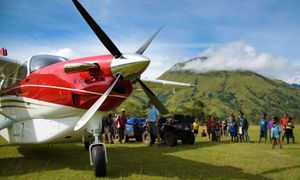Atlantic salmon populations are facing alarming declines, particularly across the rivers of England and Wales. Latest reports reveal sobering statistics, with 90 percent of wild river salmon categorized as either "at risk" or "probably at risk". This dire situation, detailed in the Atlantic Salmon Stock Assessment for 2024 released by the UK's Environment Agency and Centre for Environment, Fisheries and Aquaculture Science, underlines the gravity of the biodiversity crisis affecting these iconic fish. Just four decades ago, the UK witnessed approximately 1.4 million salmon returning to its rivers annually. Now, this number has dropped to about one third of its former self, marking unprecedented lows not seen before.
Alan Lovell, chairman of the Environment Agency, highlighted this troubling trend when the report was made public. He expressed deep concern, stating, “We’re now at barely a third of [400,000 to 500,000 salmon spawning annually], which is new evidence of the wider growing biodiversity crisis.” The International Union for Conservation of Nature (IUCN) confirmed this crisis by classifying Atlantic salmon as "endangered" on their Red List of Threatened Species, signifying the precarious state of these fish.
Historically rich rivers such as those once teeming with 20,000 to 30,000 salmon now have remnants of their former glory, with figures plummeting to as low as 1,000 to 2,000, according to Dylan Roberts, head of fisheries at the Game & Wildlife Conservation Trust. A staggering 80 percent decline observed over the past 40 years raises fundamental questions about the survival of salmon ecosystems.
But what exactly is behind this decline? According to Roberts, various factors intertwine to create the perfect storm for Atlantic salmon. Agricultural practices pose significant risks through pollution and sedimentation altering river habitats. Runoff from fertilizers and chemicals have made their way to rivers, disrupting ecosystems and threatening the health of not just salmon but numerous marine species.
Salmon travel along complex migration routes, dubbed the "smolt superhighway", as they make their way north to feed. Unfortunately, their trek coincides with peak fishing times when young salmon often fall prey to large trawlers inadvertently capturing them as bycatch. Roberts underlines how poor data collection exacerbates the issue, stating, “there's just not enough information on how salmon are moving through the rivers and oceans.” Bycatch remains poorly documented for salmon compared to other sea animals.
Another significant issue is the environmental toll taken by maize production, which has boomed as it is increasingly used for biofuels and animal feed. Roberts pointed out, "The habitat has been destroyed by intensive agriculture and all the algae and the sediment runoff," which smothers riverbeds and disrupts the delicate balance needed for salmon to thrive.
Meanwhile, the question of salmon farming continues to loom large over the discussion. Estimates suggest roughly 70 percent of the world's salmon is produced through aquaculture rather than being caught wild. While salmon farming generates significant revenue, concerns abound about the sustainability of such practices. The cramped conditions often lead to outbreaks of disease, making farmed salmon more susceptible to health issues and impacting not only their welfare but also the environment.
Roberts emphasized the issue of eutrophication – the overgrowth of algae due to nutrient influx from farms – resulting directly from farming practices. This leads to increased oxygen depletion, causing emotional strain on both wild and farmed salmon. He explained how escaped farmed salmon could also disrupt wild genetic stocks, stating, “If you upset the genetic gene pool, that's a big problem.” The exchange of traits between wild and farmed fish has the potential to undermine the robustness of the wild population.
The issues facing salmon extend beyond the UK. Ireland and Iceland are also experiencing declines due to similar threats posed by exploitation and habitat destruction. Reports indicate wild salmon numbers returning to Ireland have plummeted from 1.76 million in 1975 to just 171,700 by 2022. Meanwhile, species such as Chinook and Coho salmon are on the endangered list across parts of the U.S. and Canada. The root causes of these declines resonate with those observed elsewhere, pointing to corruption, pollution, and unregulated fisheries.
So, should people reconsider their consumption of salmon? Experts point to the increased frequency of salmon consumption worldwide, spurred by its reputation for health benefits as it contains omega-3 fatty acids. While wild salmon could be preferable due to their lower contamination with industrial chemicals like polychlorinated biphenyls (PCBs), Roberts suggested the change is not practical. Instead, organizations like the Missing Salmon Alliance provide hope as they advocate sensible production practices and regulations to protect declining stocks.
A wider look at the ecological concerns reveals challenges affecting other fish species, such as the endangered European eel, which has suffered similar declines from overfishing and habitat destruction. Eels, much like salmon, play integral roles within their ecosystems, showcasing the interconnectedness of riverine health.
Climate change also casts shadows over the viability of salmon populations globally. Rising temperatures have led to diminished oxygen levels within the water, making life-threatening conditions for salmon. Warming water forces them to exert more energy as they swim longer distances for optimal oxygen supply. These temperature changes, coupled with drastic shifts within marine ecosystems, compound the existing threats and present imminent risks to salmon as they migrate to spawn.
The road to recovery for salmon requires coordinated efforts across various sectors. Legislative changes, increased monitoring of river environments, and exploring innovative farming practices could influence the outcome of these aquatic thresholds. Maintaining sustainable salmon populations not only reinforces biodiversity but also ensures the health of interconnected ecosystems.
Although the tides may seem against salmon right now, it is not too late to address the root challenges. A collective move toward improved practices, regulation enforcement, and habitat preservation could turn the tide and send salmon populations surging back to their former numbers, bringing them back from the edge.



